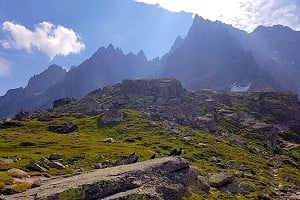
Earlier this year, the UN's climate change panel, the IPCC, released the second part of its Sixth Assessment report, titled Climate Change 2022: Impacts, Adaptation & Vulnerability. This Earth Day, we're sharing the key points highlighted in the chapter focused on mountain environments.
As we struggle to meet the long-term Paris Agreement temperature goal to limit global warming to below 2°C and towards 1.5°C, mountains face elevation-dependent warming, shrinking glaciers, reduced snow cover and changing precipitation patterns, causing knock-on effects for water supply, energy production, ecosystem integrity, agricultural and forestry production and disaster preparedness. These crises come as additional strains to mountain communities already disadvantaged by geographical and political isolation.
Scientists estimate that climate change is affecting major mountain ranges two to three times faster than the rest of the world. One-third of Himalayan glaciers — at the very least — are predicted to disappear by 2100, as temperatures rise at a rate estimated to be up to three times the global average.
In the European Alps, the mercury has risen by 2°C over the course of the 20th century – a rise greater than the French average of 1.4°C, and double that of the northern hemisphere. According to one study, if present climatic conditions are maintained, the vanishing Argentière Glacier and the Mer de Glace could both disappear by the end of this century.
Alongside the health and safety risks posed by climate-change related disasters to local populations, climbing and trekking routes are shifting with changing conditions: access to the base of glacial routes is proving more difficult or riskier, while rockfall is increasing in some areas. These specific changes impacting outdoor activities are noted in the new paper.
In August 2021, ahead of COP26, the IPCC released a special report on the impact of climate change in the mountains for the first time in the panel's history. Building on this, notably the 'High Mountain Areas' chapter, the latest paper from February 2022 assesses new evidence on observed and projected climate change impacts in mountain regions, their associated risks and adaptation measures.
Below is a redacted summary of the paper's findings. Find the Mountains chapter in full (and the full IPCC report) here.
Observed changes, their impacts, and adaptation responses in mountains
With high confidence, the report states that the impact of climate change on mountains due to human influence has increased in recent decades, with observable and serious consequences for people and ecosystems in many mountain regions. The paper reports increasing temperatures, changing seasonal weather patterns, reductions in snow cover extent and duration at low elevation, loss of glacier mass, increased permafrost thaw, and an increase in the number and size of glacier lakes.
Many plant and animal species have shifted to higher elevations in recent decades, in line with rising temperatures across most mountain regions. Treelines are rising in many areas, although slower than expected given the rate of rising temperatures Animal species normally residing in lower elevations are increasing in mountain regions, creating less diverse vegetation and increasing risks to species at higher elevations.
Climate and cryosphere change have negatively affected the water cycle in mountains, due to changes in glacial and snow melt and the resulting water flow. Mountains are an essential source of freshwater for ~2 billion people worldwide who depend fully on mountain runoff. Changes in water availability can lead to tensions and conflict in communities and safety hazards.
Climate change-driven shifts in precipitation, river flow regimes and landslides affect the production and use of energy in mountain regions, in particular hydropower. Hydropower development in response to climate change and other human interventions has also exacerbated water security problems and social injustice.
Observed climate-driven impacts on mountain ecosystem services, agriculture and pastoralism are largely negative in most mountain regions. Droughts and floods have impacted agriculture due to changes in the timing of seasons, the availability of water, pest and pollinator shifts. As a result, overall production, dietary diversity and nutritional value have been negatively affected.
There is limited evidence of social determinants of vulnerability such as gender and ethnicity being remediated by adaptations, although they have led to poverty reduction in some mountain regions. Power imbalances, gender and other inequalities exacerbate the impact of climate change and required adaptations.
Observed changes in seasonality (timing and extent) are negatively affecting mountain winter tourism and recreation and variably affect activities in other seasons. Ski resorts are increasingly relying on snow-making and management. As many climbers can attest to, climate-induced hazards are negatively affecting some climbing, mountaineering, and hiking routes. For safer recreation, changes in route choice and in the timing of activities have been adopted in some regions. Conversely, higher temperatures and extreme heatwave conditions at lower elevations have made some mountain destinations more appealing, increasing the potential for summer visits.
Climate-related hazards, such as flash floods and landslides, have contributed to an increase in disasters affecting a growing number of people in mountain regions and downstream. The number of disasters has increased, but this is possibly due to an increase in exposure to these hazards, rather than an increase in the underlying processes leading to the hazards.
Adaptation responses to climate-driven impacts in mountain regions vary significantly. Current responses are largely incremental and focus mainly on early warning systems and the diversification of livelihood strategies in agriculture, pastoralism, and tourism. However, there is limited evidence of the feasibility and long-term effectiveness of these measures to address climate related impacts and related losses and damages.
Projected impacts, key risks and limits to adaptation in mountains
Increasing temperatures will continue to induce changes in mountain regions throughout the 21st century, with expected negative consequences for mountain cryosphere, biodiversity, ecosystem services and human wellbeing. Many low elevation and small glaciers around the world will lose most of their total mass at 1.5°C GWL (Global Warming Level). A large majority of mountain species will be at risk of extinction; regions heavily relying on mountain water for irrigation will face erratic supply and increased food insecurity, whereas agriculture in some regions might see positive changes. Damages and losses from floods and landslides are projected to increase considerably between 1.5 and 3° GWL.
Projected changes in hazards will lead to severe risk consequences for people, infrastructure and the economy in many mountain regions. These risks will be more prevalent and increase more rapidly in South and Central Asia and Northwestern South America. However, nearly all mountain regions will face at least moderate and some regions even high risks at around 2°C GWL.
There is an increasing risk of species extinctions where they are not able to move to higher or cooler locations, with risks from extreme events such as wildfire potentially exacerbating those risks. The topographic variation in mountains may mean that some species can survive in cooler microclimates, and some mountain regions may act as refuges for species from lower elevations. However, this can present a threat to cold-adapted species, including endemics, which may be outcompeted. Invasive non-native species may become an increasing problem in some areas.
Climate change is projected to lead to profound cultural changes and losses in mountain regions. Intangible losses and loss of cultural values will become increasingly more widespread in mountain regions mainly driven by a decline in snow and ice and an increase in harm from hazards.
Options for future adaptation and climate resilient sustainable development in mountains
- Reducing risks also depends on addressing causes of vulnerability including poverty, marginalisation, and inequitable gender dynamics.
- Risk management strategies that better integrate the adaptation needs of communities, including Indigenous knowledge and local knowledge, can help reduce risk severity
- There are increasing calls for more ambitious climate action in mountains, providing an impetus for stronger transboundary cooperation within and across mountain regions, and downstream areas.
- With warming above 1.5 degrees C, the need for adaptation to address key risks in mountains becomes increasingly urgent.
IPCC Sixth Assessment Report and Chapters in full here.
***
How can you help?
Tackling climate change can seem daunting, but there are ways that everyone an help, both by lobbying and cutting ties to major organisations who contribute significantly to climate change, and making manageable lifestyle changes.
- Divest the Dirt - lobby your local council to divest their pension funds from fossil fuel companies.
- Rethink travel - Last year, the Alpine Club's Environment Panel announced recommendations on travel with regard to its impact on climate change. Led by journalist Ed Douglas, the panel discussed and wrote up guidelines relating to adventure travel, the carbon footprint of globetrotting climbers and explored how to mitigate the effects of trips to far flung places.
The Alpine Club's recommendations - complete with tips and tricks for reducing our impact - are summed up as follows:
1. Reflect on how you travel: the means and frequency.
2. Reduce the amount you fly.
3. Offset when you travel.
- Donate to Moors for the Future, founded in 2003 to tackle the issue of moorland degradation. So far, they've transformed over nearly 8,000 acres of peat moors across the Peak District and South Pennines by planting a highly carbon-absorbing plant called sphagnum moss, which can remove carbon from the atmosphere in volumes comparable to those absorbed by healthy tropical rainforests.
You can sponsor a square of sphagnum, or donate directly to either campaign.
Healthy moorlands will:
- Actively fight the climate crisis
- Reduce wildfire risk
- Reduce flooding risk
- Protect endangered wildlife
- Donate to Mossy Earth, an offsetting and rewilding initiative.
Links to mountain climate organisations and initiatives:
IPCC report on High Mountain Areas
International Network of Mountain Indigenous Peoples
Read our UKC/UKH articles on issues relating to climate change and the environment:
- ARTICLE: International Mountain Day 2023 - Mountains & Climate Science at COP28 11 Dec, 2023
- ARTICLE: Dàna - Scotland's Wild Places: Scottish Climbing on the BBC 10 Nov, 2023
- INTERVIEW: BMC CEO Paul Davies on GB Climbing 24 Aug, 2023
- ARTICLE: Spectacular Sights at Great Height - Visual Phenomena in the Mountains 27 Mar, 2023
- ARTICLE: Using OpenAI to Create Climbing Content and Images 27 Dec, 2022
- ARTICLE: COP27 and the Cryosphere - No Mountaintop Miracles 11 Dec, 2022
- ARTICLE: Coronation Coincidence: Everest 1953 and Queen Elizabeth II 13 Oct, 2022
- ARTICLE: Meet Ralph, the First Canine Compleatist of the Grahams 4 Aug, 2022
- ARTICLE: Climbers and Guides Adapt to Changing Climate and Landscape in the Alps 28 Jul, 2022
- ARTICLE: The Ukrainian Mountain Assault Brigade Fighting on the Front Lines 4 Apr, 2022
- ARTICLE: International Mountain Day 2023 - Mountains & Climate Science at COP28 11 Dec, 2023
- ARTICLE: Dàna - Scotland's Wild Places: Scottish Climbing on the BBC 10 Nov, 2023
- INTERVIEW: BMC CEO Paul Davies on GB Climbing 24 Aug, 2023
- ARTICLE: Spectacular Sights at Great Height - Visual Phenomena in the Mountains 27 Mar, 2023
- ARTICLE: Using OpenAI to Create Climbing Content and Images 27 Dec, 2022
- ARTICLE: COP27 and the Cryosphere - No Mountaintop Miracles 11 Dec, 2022
- ARTICLE: Coronation Coincidence: Everest 1953 and Queen Elizabeth II 13 Oct, 2022
- ARTICLE: Meet Ralph, the First Canine Compleatist of the Grahams 4 Aug, 2022
- ARTICLE: Climbers and Guides Adapt to Changing Climate and Landscape in the Alps 28 Jul, 2022
- ARTICLE: The Ukrainian Mountain Assault Brigade Fighting on the Front Lines 4 Apr, 2022




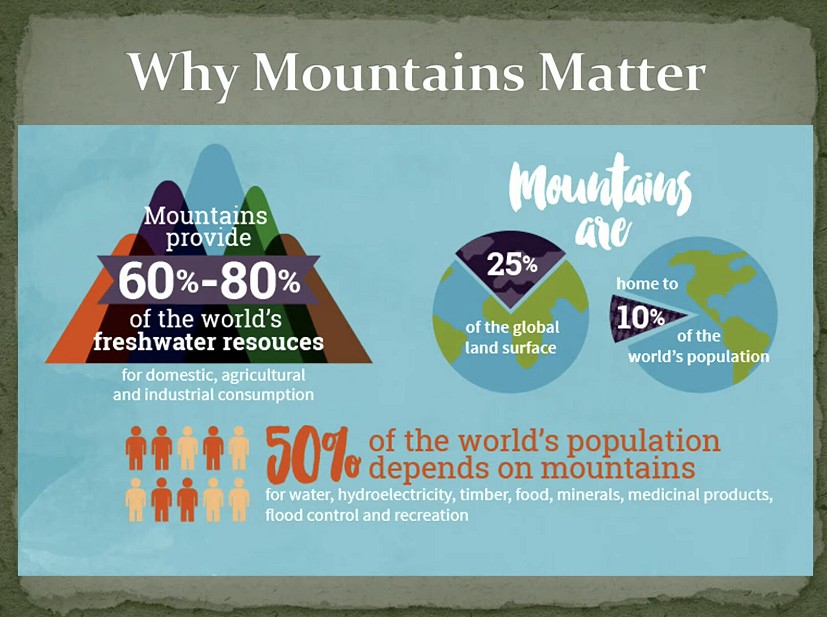


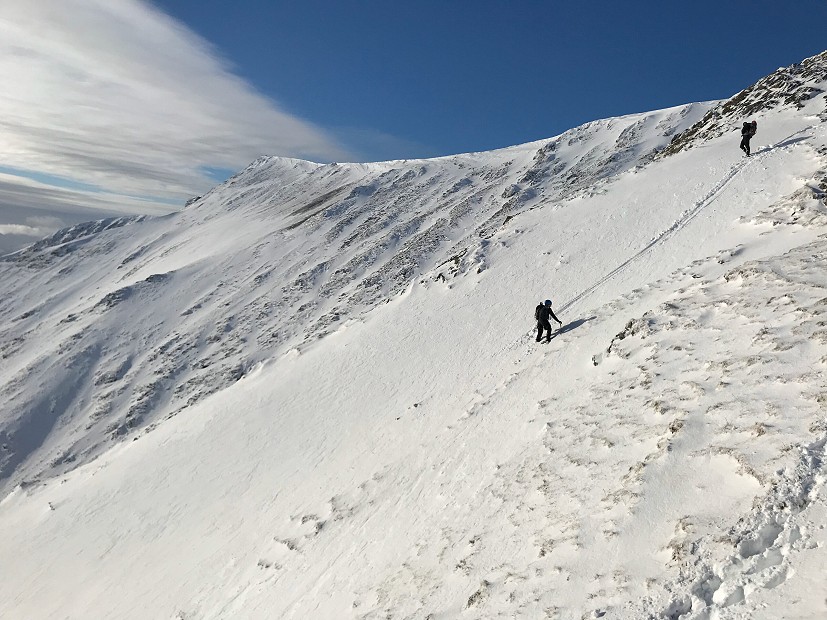
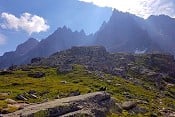
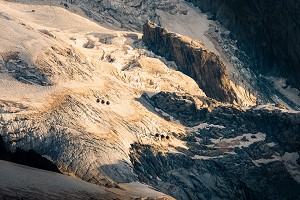


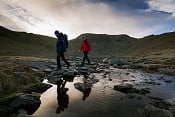






Comments